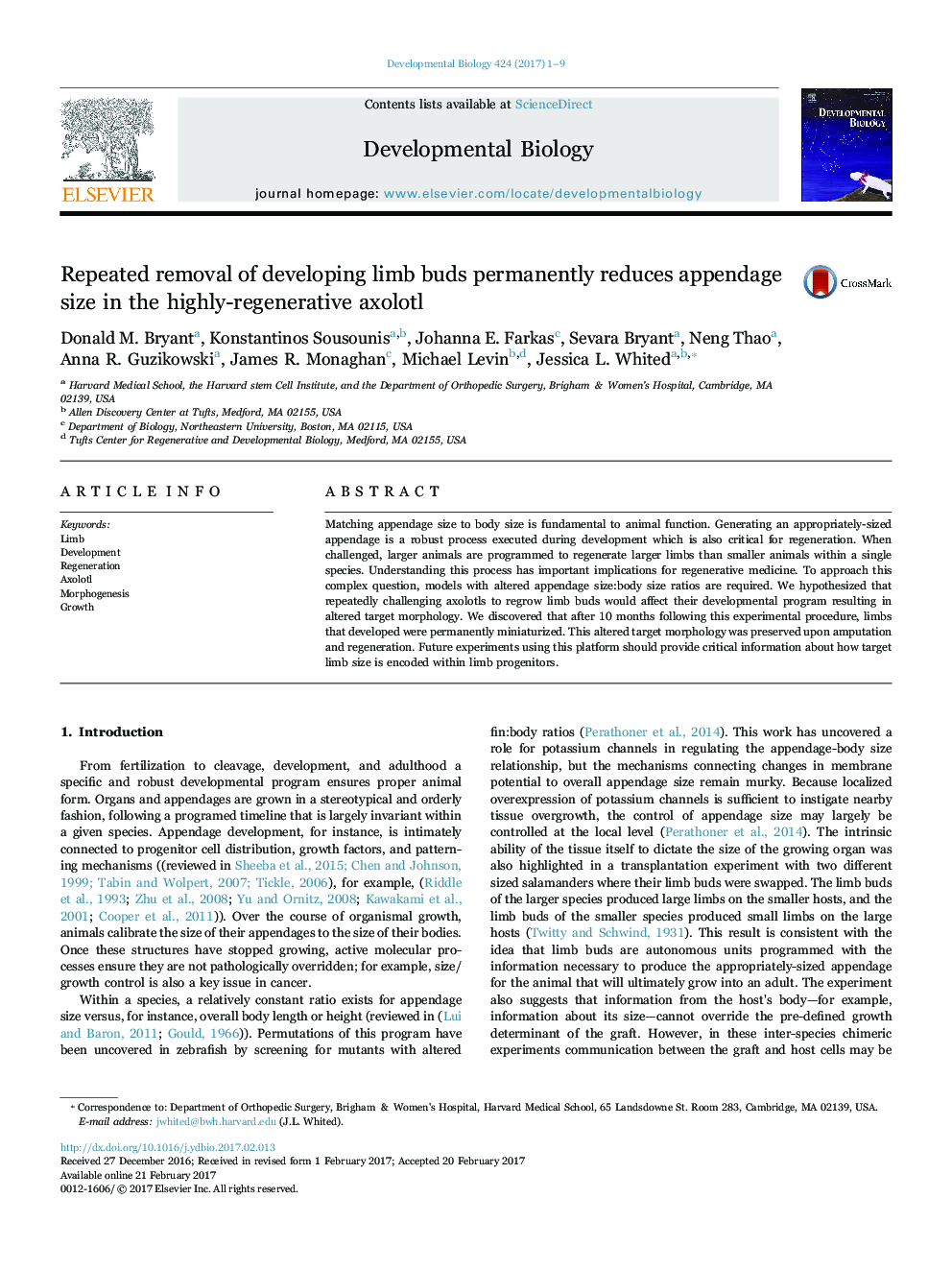| کد مقاله | کد نشریه | سال انتشار | مقاله انگلیسی | نسخه تمام متن |
|---|---|---|---|---|
| 5531731 | 1401811 | 2017 | 9 صفحه PDF | دانلود رایگان |
- Repeated blastema removal exhausts axolotl limb regeneration, leading to amelia.
- Axolotl limbs that form after prolonged bud removal are miniaturized.
- Miniaturized axolotl limbs are nerve-deficient.
- Miniaturized limbs can be used to study size determination during regeneration.
Matching appendage size to body size is fundamental to animal function. Generating an appropriately-sized appendage is a robust process executed during development which is also critical for regeneration. When challenged, larger animals are programmed to regenerate larger limbs than smaller animals within a single species. Understanding this process has important implications for regenerative medicine. To approach this complex question, models with altered appendage size:body size ratios are required. We hypothesized that repeatedly challenging axolotls to regrow limb buds would affect their developmental program resulting in altered target morphology. We discovered that after 10 months following this experimental procedure, limbs that developed were permanently miniaturized. This altered target morphology was preserved upon amputation and regeneration. Future experiments using this platform should provide critical information about how target limb size is encoded within limb progenitors.
Journal: Developmental Biology - Volume 424, Issue 1, 1 April 2017, Pages 1-9
